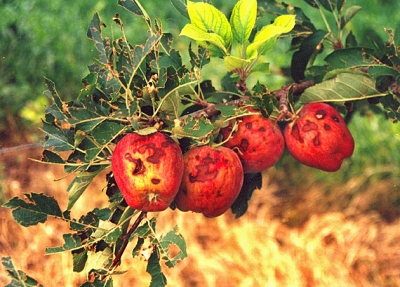
Bacteria are tiny organisms that can be seen only through a microscope. They live alone as solitary individuals or in groups that are linked like chains. They vary in shape according to their species.
Bacteria are responsible for many diseases in people, plants and animals. These diseases are infectious because they can be passed on whenever the bacteria move to a new place. In plants, over 150 different species of bacteria cause three main types of disease: vascular, parenchymatous and hyperplasic.
In vascular diseases the bacteria attack the vessels and main channels of a plant. This causes a blockage of vital food supplies and the plant dies.
In parenchymatous diseases, the bacteria attack the active tissues of the plant which then rots and dies.
In hyperplasia, the bacteria cause the cells of the plants to multiply wildly and produce swellings or tumours on the stem, the roots and sometimes even on the leaves.
Plants can also catch serious diseases from viruses. There are many kinds of virus, each different from the other and each capable of causing several disorders. It has been found that viruses are carried from one plant to another by insects. These insects act as carriers by sucking the juices of a diseased plant and then injecting them into a healthy one.
A number of viruses are soilborne and some of these are spread by eelworms that feed on plant roots.
Man, too, can spread viruses by handling diseased plants and then touching healthy ones.
One disorder caused by viruses is dwarfism when the plant is stunted. Other virus infections attack the leaves and make them dried and crumpled or cause blisters on the plant’s tissues.
Picture Credit : Google

